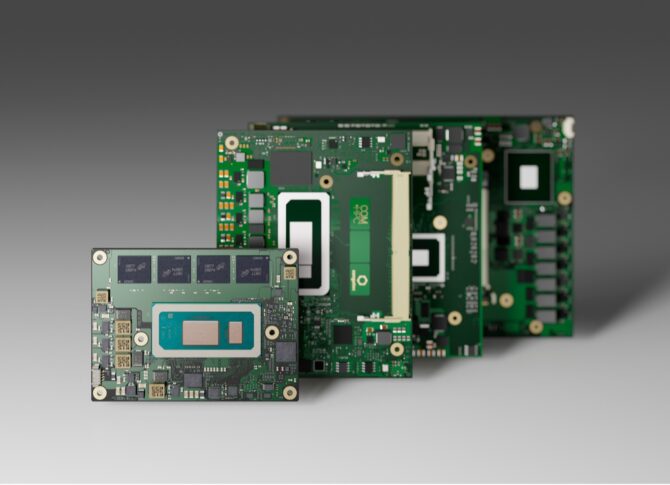
PICMG releases ‘Mini’ 95mm x 70mm form factor COM spec
EP&T Magazine
Embedded Systems Regulations & Standards Engineering Supply Chain COM-HPC computing embedded Mini PICMG specStandard brings low power, high-performance interfaces to drones, mobile robots, mobile test equipment
PICMG, a leading consortium for developing open embedded computing specifications, has released its COM-HPC 1.2 ‘Mini’ specification. Measuring just 95 mm x 70 mm, COM-HPC Mini is nearly half the size of the next-smallest COM-HPC form factor and provides a cost-effective, lower power module for autonomous mobile robots, drones, mobile 5G test and measurement equipment, and other far edge applications.
A single, rugged 400-pin connector allows COM-HPC Mini to support communications interfaces such as:
- 16x PCIe lanes (PCIe 4.0 or PCIe 5.0)
- 2x 10 Gbps NBASE-T Ethernet ports
- 8x SuperSpeed lanes (for USB4/ThunderBolt, USB 3.2, or DDI)
- 8x USB 2.0
- 2x SATA ports (shared with PCIe lanes)
- 1x eDP
- 2x DDI
The 1.2 specification defines a separate FFC connector for MIPI CSI, while its 400 pins also support signals such as Boot SPI and eSPI, UART, CAN, Audio, FUSA, and power management signals. A signal voltage reduction from 3.3V to 1.8V on most pins is in line with reduced I/O voltage on the latest low-power CPUs. The input power is limited to a maximum of 107W at a wide input voltage of 8V to 20V, leaving plenty of headroom for performance processors.

Source: PICMG
“The COM-HPC size A started at 95 mm x 120 mm, but the market loves the Mini size as well as the performance you get with COM-HPC,” says Christian Eder, director of product marketing at congatec and Chairman of the COM-HPC working group at PICMG. “The whole trend of making things smaller and more power-saving was a reaction to market trends, and it will continue.”
Mini’s smaller footprint also provides mechanical advantages, such as a 15mm stack height from the top of a carrier board to the top of a heat spreader stacked on a COM-HPC Mini module. This 5mm reduction compared to other COM-HPC variants means COM-HPC Mini modules must use soldered memory, which makes them inherently rugged through resistance to shock and vibration and provides direct thermal coupling to heat spreaders.
Spec leverages high-speed capabilities and SI performance
“The new revision of the specification allows COM-HPC to address additional high-performance applications that require a smaller footprint,” says Doug Sandy, CTO of PICMG. “COM-HPC 1.2 is a great solution that completes the spectrum of solutions of COM Express through COM-HPC Server Modules.”
“The COM-HPC Mini specification leverages the high-speed capabilities and SI performance of existing COM-HPC interconnect solutions,” says Matthew Burns, Global Director of Technical Marketing at Samtec. “Dropping one 400-pin connector enables small form-factors without sacrificing the data throughput demanded at the Far Edge.”
PICMG members ADLINK, congatec, Samtec, SECO, and others have either already released or plan to release COM-HPC 1.2 product in the near future.
For more information, visit www.picmg.org/openstandards/com-hpc.
